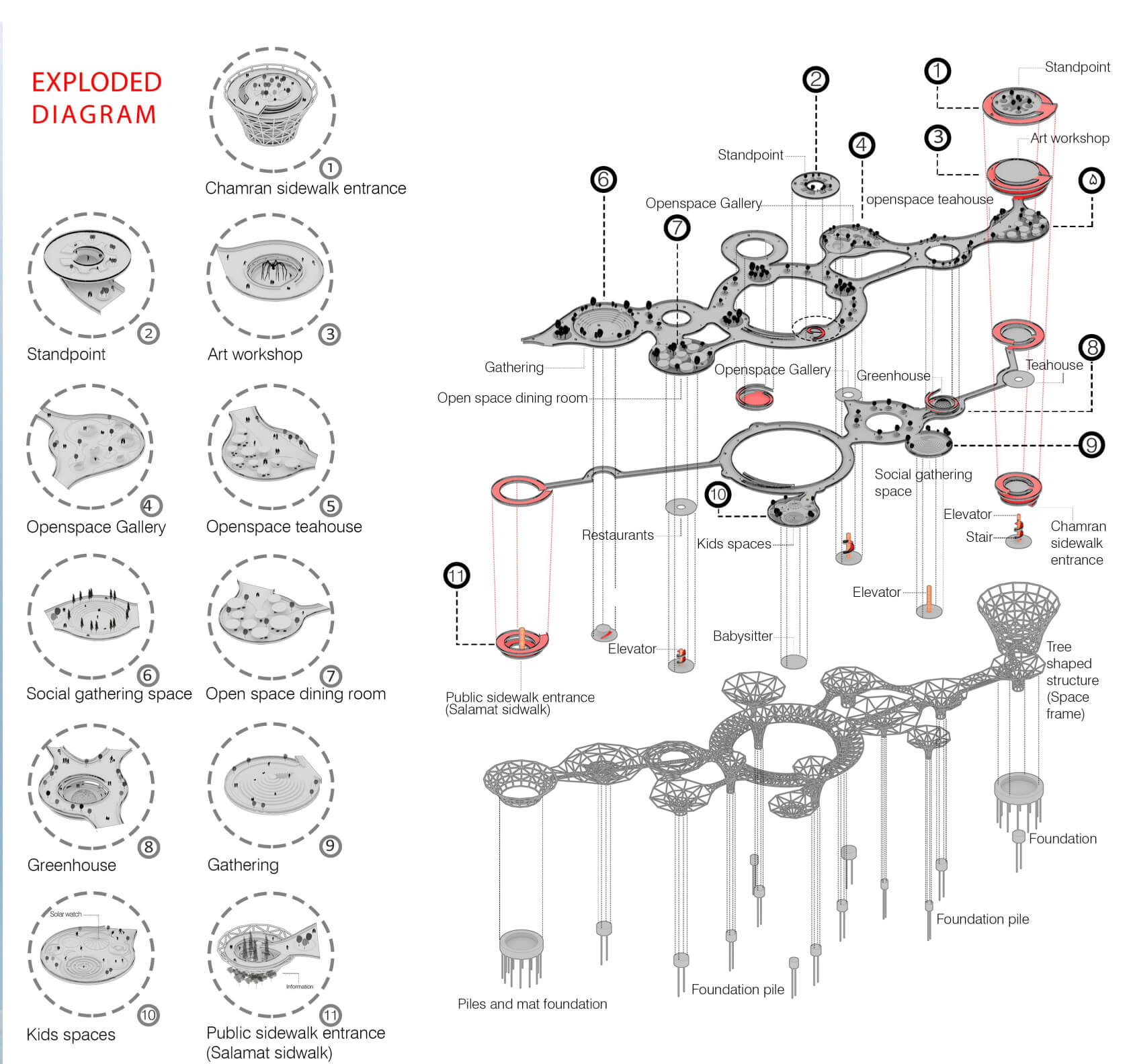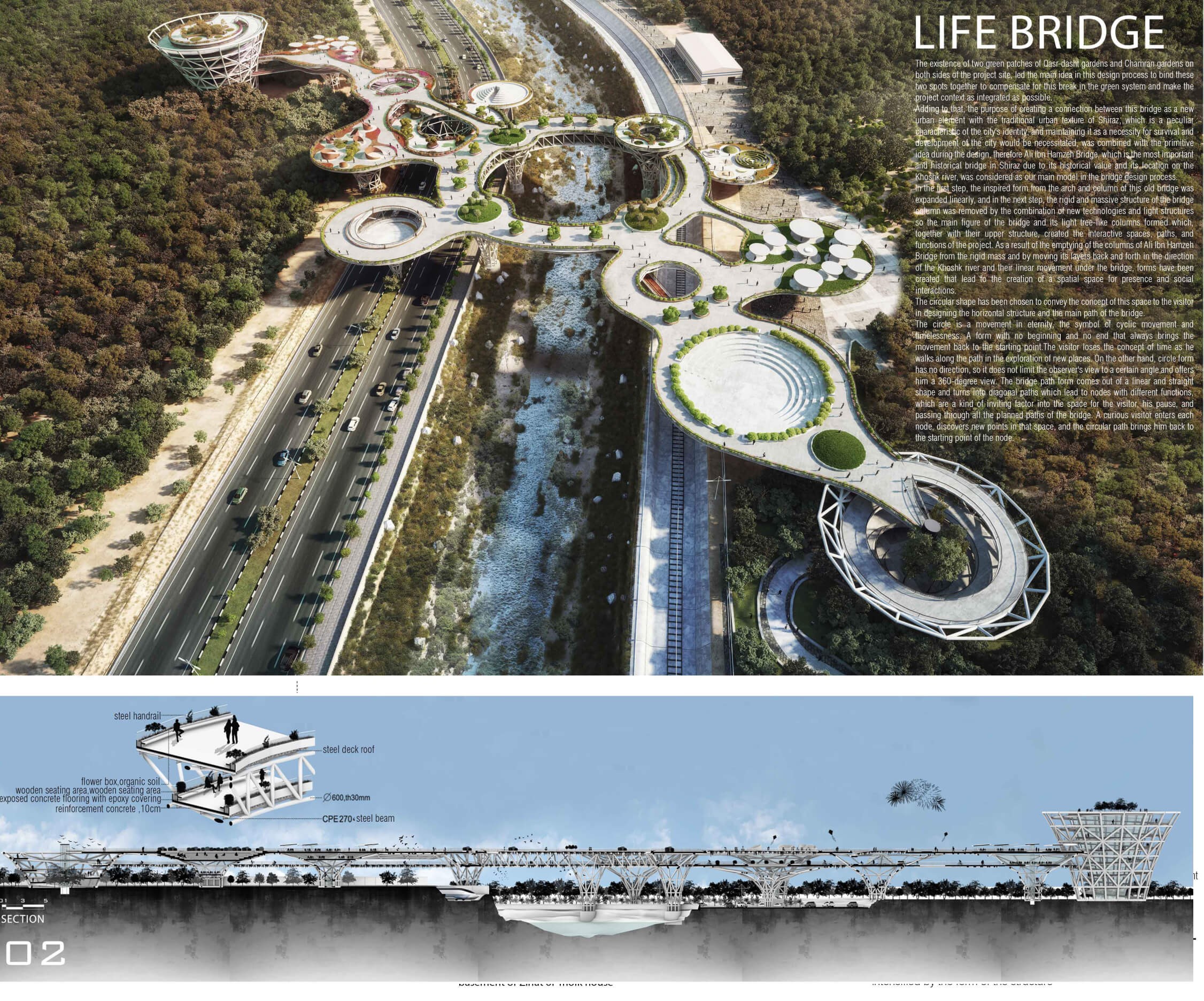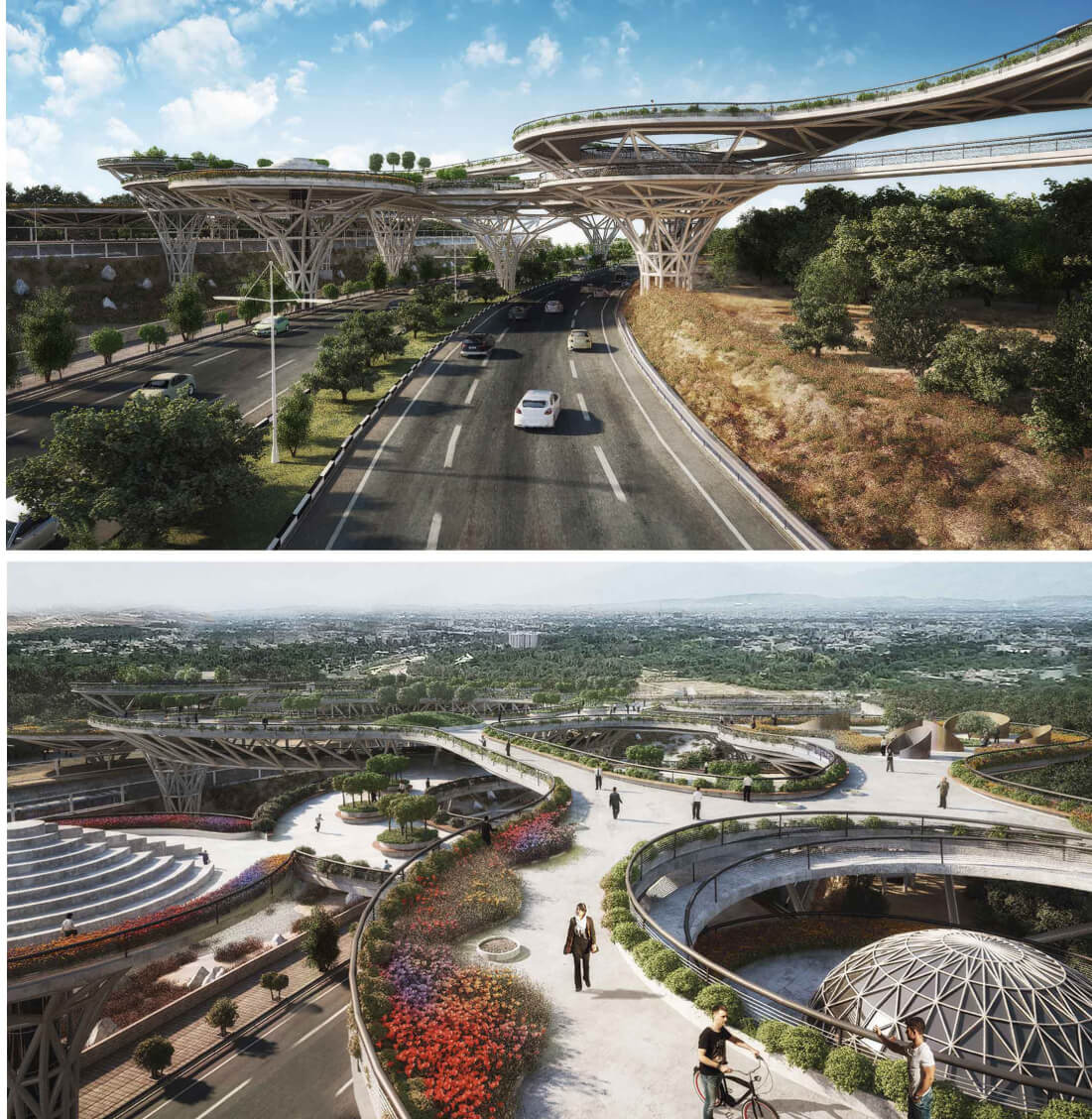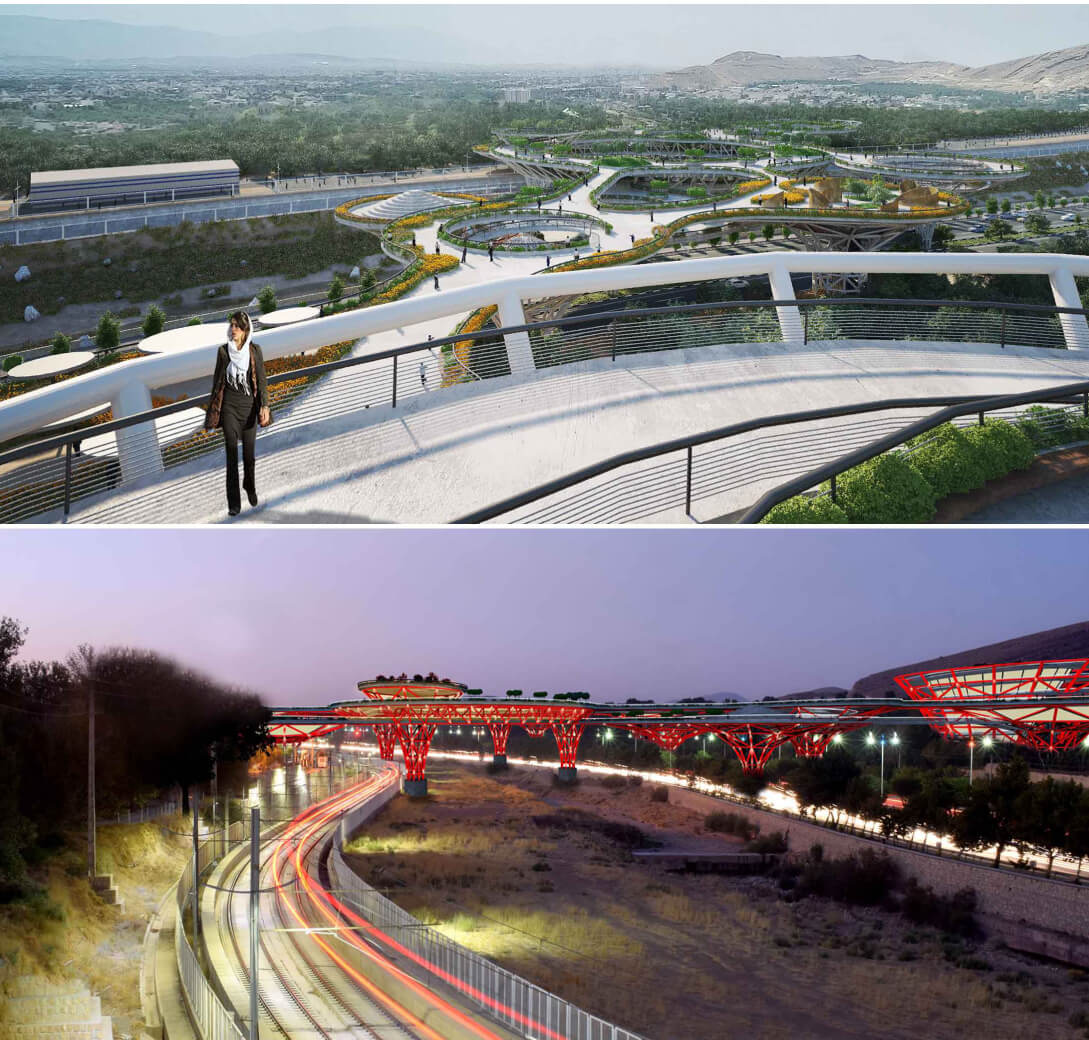Second Place – Future
Life Bridge
Architect: AmirHossein Ashari
Design Team: Afshin Ashari, Zahra Jafari, Ehsan Shabani, Roodabeh Lotfpour, Donya Rahmatzadeh
Description:
The existence of two green patches of Qasr-dasht and Chamran gardens on both sides of the project site led the main idea in this design process. The major concept was to connect them so that this break in the green system could be compensated for and the project context could be integrated. With that in mind and preserving Shiraz’s unique urban texture, this bridge was designed to connect it to the city’s historic urban fabric, a distinctive feature of Shiraz’s identity and hence necessary for its survival and growth. As a result, the team looked to Shiraz’s Ali Ibn Hamzeh Bridge as a primary architectural model because of its historic significance and strategic location on the Khoshk River.
It began by taking inspiration from this old bridge’s arch and columns, which were linearly expanded, and then removing the bridge column’s rigid, massive structure using new technologies and light structures, creating the bridge’s main figure and its light tree-like columns, which, together with their upper structure, created the interactive spaces, pathways, and functions of the project.
To create a space for social interaction and presence, the Ali Ibn Hamzeh Bridge was stripped of its hard bulk, and its strata were shifted back and forth in the direction of the Khoshk River. This movement under the bridge created new forms. Circular motion is represented by the circle, which is also a symbol for cyclic motion and timelessness. Forms with no beginning or end points always return to the starting position. During the investigation of this place, the tourist loses his sense of time. On the other hand, the circle form has no direction, so the observer’s vision is unrestricted, and he has access to a full 360-degree view.








